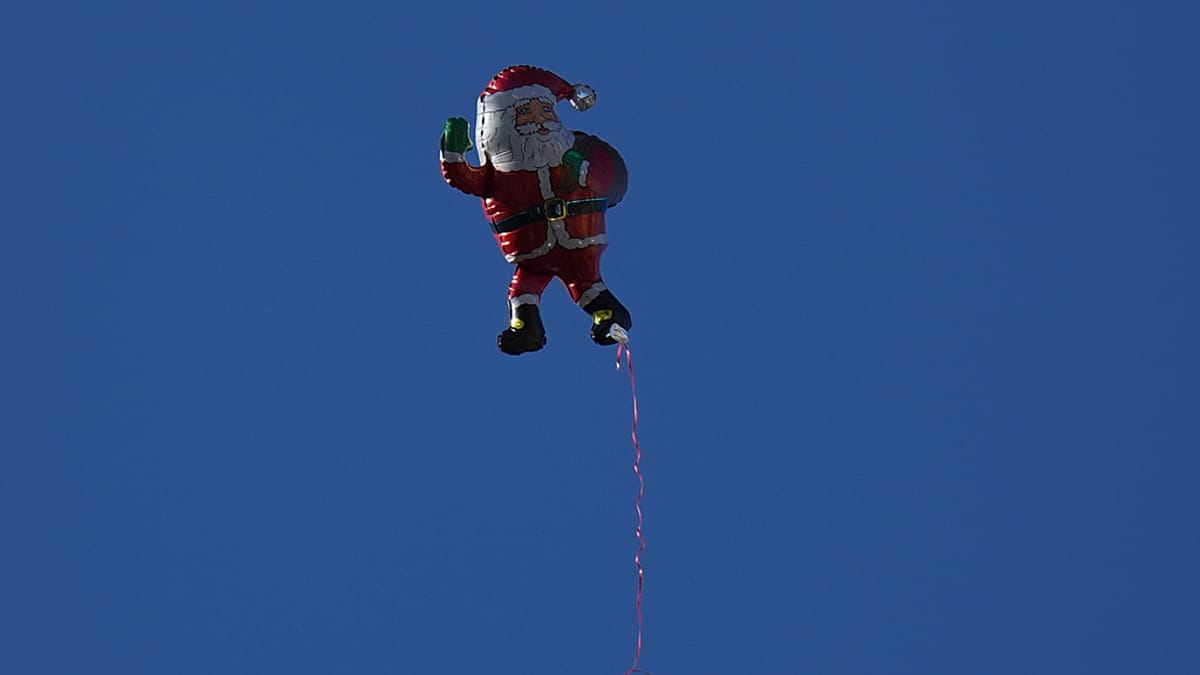Shark vs. Roomba: A detailed investigation of the robot vacuum rivalry


The new 2025 Roombas shifted the tides
This comparison guide would have been a very different article to read had you clicked on it any time before March 2025. Before that, iRobot and Shark were both kind of plateauing in terms of the variety of their respective lineups. It was like a competition to see who could be the most mid.
But the lukewarm rivalry got interesting when iRobot went rogue and overhauled the whole Roomba fleet outside of its typical late summer schedule. The newest batch consists of eight new Roombas falling under four different umbrellas: the Roomba 105 or 205, or Roomba Plus 405 or 505, ranging in price from $299 to $999. The move may or may not have been a last-ditch effort to save the company from a reportedly bleak financial situation.
iRobot seems to have patched up many of its weak spots and prioritized budget friendliness without skimping on features that consumers really care about, like including smart mapping in even the cheapest models.

Where Roomba wins: Small obstacle avoidance and more models to fit more needs
iRobot simply has more robot vacuums than Shark, and that variety alone will make it a more palatable brand to more people. More models to choose from means more opportunities to customize the features and budget to a shopper's main goals for automated cleaning.
Let's say you're willing to pay a little extra for a premium robot vacuum that achieves the most hands-off experience possible. Between Shark and iRobot, iRobot has more options with features that make a robot vacuum self-sufficient, including mopping pads that automatically lift when going over carpet, self-empty docks that also wash and dry the mopping pads, and small obstacle avoidance cameras.
The coolest part about the Roomba lineup is that you can mix and match several of these features to stay within a certain budget. You can skip all of the other fancy features while still bringing home small obstacle avoidance with the standalone Roomba j7 for as little as $299 on sale, or try out the space-saving DustCompactor design with or without mopping for under $500. Even the cheapest 2025 Roombas guarantee LiDAR-powered smart mapping and 70 times (read that again) the suction power of the 600 series Roombas, which were the super popular cheap Roombas a few years ago.
The most significant expansion to the Roomba family has been to the self-sufficient mopping Roombas — great news for folks who have been avoiding robot vacuums with mops because they don't want to manually handle the soggy pads. While Shark only has one robot vacuum that maintains its own mopping pad, several Roombas do so at varying price points:
Roomba Plus 405 Combo for as low as $399.99 on sale (no small obstacle avoidance)
Roomba Plus 505 Combo for as low as $599 on sale (has small obstacle avoidance)
Roomba Combo 10 Max for as low as $599.99 on sale (stronger suction power and small obstacle avoidance)
Roomba Max 705 Combo for $1,299.99 (roller mop, stronger suction power, and small obstacle avoidance)
If your home's hard floors are perpetually covered in a layer of hair from various pets, self-rinsing mopping pads are a hallmark feature of the best robot vacuums and mops for pet hair. Otherwise, all of that fur will be clinging to the wet mopping pad until the next time you wash it by hand.
iRobot also diverted from the traditional flat mopping pad with its 2025 overhaul. Now, the Roomba Plus 405 and 505 Combo use dual spinning mopping pads — a design that the majority of iRobot customers prefer, iRobot told me in a press briefing. The Roomba Max 705 Combo upgrades even further to a roller mop, making it close competition to other new high-end releases like the Dreame Aqua10 Ultra Roller.
But here's the thing with robot vacuum and mop combos: Not everyone is pro-combo. A lot of people simply don't want to deal with tanks or anything soggy at all, but finding a vac-only robot vacuum typically means settling for a super basic model — all of the most advanced robot vacuums are automatically hybrids nowadays. iRobot heard the cries of the anti-mop crowd on Reddit and released a vacuum-only version of one of the most powerful Roombas, the Max 705 Vac.


iRobot's mastery of small obstacle avoidance gives it serious leverage over Shark — it's actually the best small obstacle avoidance I've experienced from any brand I've tested at home. All j-series Roombas, the Roomba Combo 10 Max, the Roomba Plus 505 Combo, and both 705s have the special small obstacle detection camera system, which helps to avoid small obstacles that less-advanced robot vacuums would typically eat, like a phone charger, extension cord, rogue sock, or pet waste. In short, it solves the main gripe that many robot vacuum non-believers have: robot vacuums get stuck so often that they're more trouble than they're worth.
I first experienced this sense of relief when reviewing the Roomba j7+ and Combo j7+, and it was never easy to get back into the habit of pre-tidying when trying another robot vacuum that didn't have small obstacle avoidance. I'd easily sacrifice more intense cleaning for a robot vacuum to have the brain cells to do that.
Where Roomba loses: Cutting corners at the ultra-cheap and premium ends of the spectrum
Plummeting earnings one month, a random revamp of the entire Roomba line the next month — if we're trying to read between the lines, I'd say it became glaringly obvious that people were getting sick of Roombas costing a lot but not doing enough.
So while I'll give credit to Roomba for getting more practical with its prices, Shark still does budget-friendly better. For instance, I think that the perfect starter robot vacuum is one with smart mapping and self-emptying, with suction power being less of a priority as long as it's sufficient for light daily upkeep. In Roomba world, the cheapest option for this is the Roomba 105 + AutoEmpty Dock, going for $449.99 at full price or around $299.99 on sale. In Shark world, the same capabilities can be secured for as low as $199.99 on sale with the Shark IQ RV2302AE. And there are definitely more powerful cheap robot vacuums than both of them, namely from Roborock.
At the absolute most affordable end of the spectrum, iRobot's $150 to $250 assortment is comically Not Worth It. In April 2024, iRobot fumbled a low-hanging opportunity to fix the cheap Roomba situation by releasing even more cheap Roombas without smart mapping. I wouldn't recommend the Roomba Essential line to anyone — smart mapping is a feature I feel is ~Essential~ in any robot vacuum.

In my experience, just hitting "go" and letting a robot vacuum clean aimlessly is a recipe for coming home to a robot vacuum lost under the bed. The zigzag pattern feels like a hit-or-miss guessing game made more annoying by getting stuck and missing spots on the floor that I'd rather just hit with my Dyson stick vacuum, anyway.
Sure, all of these base-tier Roombas do go on sale often. You could technically score the absolute cheapest Roomba for around $130 or a mopping, self-emptying Roomba for $280. But settling for no specific room cleaning just isn't worth it, especially when a similar wad of cash could get you way further if you were buying a Shark.
There's also some skimping afoot on the fancy end of the iRobot spectrum — the most powerful Roomba doesn't stand a chance against the most powerful contenders from other brands. On its face, the Roomba Max 705 Combo sounds like a beast: It has 175 times the suction power of a 600 Series Roomba and is coined as the most powerful 2-in-1 Roomba. But iRobot, who is quietly revealing Pa suction power measurements for the first time, has confirmed that the Roomba Max 705 Combo has 13,000 Pa suction power. That means that even the best Roomba for pet hair or carpet is significantly weaker than the other flagship robot vacuums out there: the Narwal Freo Z Ultra has 18,000 Pa, the Roborock Saros 10 and Z70 have 22,000 Pa, and the Dreame Aqua10 Ultra Roller has 30,000 Pa. That's not a direct comparison to Shark, but definitely still relevant.

The curb appeal of the new self-emptying Roomba Combo models is lacking. The plasticky exposed water tank look doesn't exactly flow in an otherwise cozy, well-decorated home — this feels like the physical embodiment of cutting corners to keep prices down. I'm much more keen on the Shark PowerDetect NeverTouch Pro's sleek self-emptying dock.
Where Shark wins: Spot cleaning and affordability
Shark has historically been in tune with what the average person is willing to spend on a robot vacuum. The brand consistently offers core capabilities like smart mapping and mopping at lower prices than its Roomba counterparts — a level of cost-effectiveness that should be particularly enticing to strict budget shoppers or first-time robot vacuum owners.

Shark's more approachable price points don't necessarily mean it skimps on cleaning performance, though. Shark Matrix vacuums clean in a grid pattern, approaching the area several times from multiple angles to grab anything it may have missed in the first pass or two. According to Shark, Matrix mode dishes out 30 percent better carpet cleaning than the older RV Shark models. For Shark 2-in-1 robot vacuums, a mop in Matrix mode vibrates 100 times per minute to scrub at stains that likely wouldn't budge from a single pass of a cheaper robot mop or a paper towel. Matrix mopping always comes in clutch for keeping up with the constant layer of shoe prints by my front door.
While the brands themselves make it difficult to directly compare suction power on paper, in my experience, I found the low and mid-range Shark models to be less likely to leave a rogue crumb or pile of hair behind than a majority of budget Roombas.
Shark even extends the Matrix cleaning mechanism to most of its super-affordable models, making any of the RV2310 or RV2300 models a solid choice for a budget robot vacuum. I experienced no noteworthy navigational issues when sending either of those models to sweep specific spots in my apartment. Though the suction power is expectedly just OK, it was enough for surface-level daily upkeep of the big, visible debris. These two Sharks are also some of the most compact self-emptying robot vacuums I've seen — huge news for small spaces that don't have room for a huge dock.
Shark robot vacuums particularly shine when it comes to messes that need to be taken care of right now. Shark's spot cleaning has been such a straightforward, reliable feature in every Shark robot vacuum I tried. My ultimate spot cleaning test is the area outside either of my cats' litter boxes — even the cheap Shark robot vacuums always got to the right spot and cleared the kitty litter before I walked in there with bare feet.
In September 2024, Shark finally caught on to the whole "self-sustaining mopping pads" thing with the release of the Shark PowerDetect line. Even those premium Sharks debuted at $1,199.99 and $999.99 — far less than the asking price for flagship hybrids from other brands.

This is the first mopping Shark that knows to stop mopping on carpeted areas without you having to specifically designate so. For good measure, the PowerDetect is also equipped with large wheels that hoist the vac over carpet to keep it dry during mopping mode. Those hydraulics also helped the PowerDetect to be one of the only robot vacs I've tested that's never gotten stuck on a rug corner or scrambled up my bath mats.
Where Shark loses: Small obstacle avoidance and variety
Shark's biggest shortcoming is that it takes forever to release new robot vacuums, and that staggered schedule often leaves it playing catch-up with other brands. Brands like Roborock and Dreame seem to drop new crops of robot vacuums twice in the time period that Shark introduces a single new model. The existing mid-tier Shark models are also a little more basic than the Roombas in the same price range.
Shark will also be at a huge disadvantage until its robot vacs can avoid cords and pet waste — it's the lone major robot vacuum brand that hasn't really invested in small obstacle avoidance. This is such a staple feature in my life, as I'm sure it is for anyone whose floor might be cluttered lived in from time to time.
Though I was satisfied with the floor coverage, thoroughness, and mapping accuracy when testing the Shark Detect Pro, it seems overpriced for the negligible differences between it and a regular old self-emptying Shark. "Detect" sounds like it should refer to the capability to detect phone chargers or socks, but alas, it's actually talking about a feature that increases suction when an edge, corner, or extra dirty spot is detected.

Similarly, only one mopping Shark automatically stops mopping when carpet is sensed. This means vacuum and mop mode aren't possible at the same time in the other 2-in-1 Shark Matrix models, and a person needs to manually attach the water tank to switch to mopping mode. With Matrix Mopping being such a solid feature, it's a bummer that its usage is so dependent on human intervention.
Even the best Shark robot vacuum still only has a flat D-shaped mopping pad. It does press downward and vibrate for more tenacious scrubbing action than the lazy mopping done by cheap mopping robots, but the robot vacuum is kind of past that singular design now. Most people, myself included, seem to prefer dual spinning mopping pads, and now roller mops reminiscent of a paint roller are popping up — both mopping designs that iRobot offers. The PowerDetect NeverTouch Pro did a solid job of wiping up small spills and shoe stains on my apartment's hardwood, but it wasn't able to scrub in corners and along edges like iRobot's flexible spinning mops can.
Shark doesn't do itself any favors by refusing to list its vacuums' suction power in Pascals (Pa). Almost every other major robot vacuum brand measures suction power in Pa (even iRobot now), which makes comparing options easy. Shark still insists on keeping an air of mystery by solely comparing suction power to other vacuums in its own family tree. Shark has also been known to make claims like "50% better suction than the best-selling iRobot." Whatever that means.
Where iRobot and Shark both lose: Their apps suck
Ironically, two of the most longstanding names in the robot vacuum game have the two most outdated-feeling apps. The bare bones home maps in both the Roomba Home and Shark Clean apps are far less intricate than the color-coded maps that Roborock or Eufy offer. Pausing a clean or adding an extra room to the queue is similarly clunky on both.














































